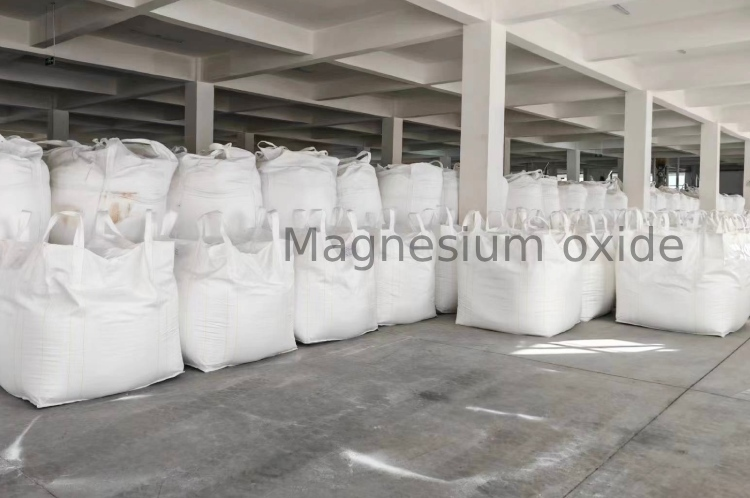How to Obtain Magnesium Oxide from Magnesium | Simple Explanation
Learn how to obtain magnesium oxide from magnesium through oxidation. Easy steps, reaction equation, and real-world uses explained in plain English.

How Will You Obtain Magnesium Oxide from Magnesium?
Ever seen someone burn a shiny metal strip that glows blindingly white?
That’s magnesium turning into Oxid de magneziu — one of the simplest, most dramatic chemical reactions you can see.
So, how will you obtain magnesium oxide from magnesium?
Let’s walk through the process like we’re in a lab together.
What Is Magnesium Oxide?
Before jumping into the “how,” let’s get clear on what magnesium oxide is.
Oxid de magneziu (MGO) is a white, powdery solid formed when magnesium (Mg) reacts with oxygen (O₂).
It’s known for its high melting point, basic nature, and excellent heat resistance — which is why it’s used in refractory bricks, medical antacids, and ceramică.
The Chemical Equation
Here’s the simple balanced reaction:
2Mg(s)+O2(g)→2MgO(s)
This means:
Two magnesium atoms combine with one oxygen molecule to form magnesium oxide.
It’s a combination reaction — magnesium and oxygen combine to make one compound.
Step-by-Step: How to Obtain Magnesium Oxide from Magnesium
You don’t need a complex setup — just basic lab equipment and good safety habits.
Materials Needed
Magnesium ribbon or powder
Tongs (to hold the metal)
Bunsen burner or flame source
Crucible (optional, for controlled heating)
Safety goggles + gloves
Step 1: Clean the Magnesium Ribbon
Magnesium ribbon develops a thin layer of Oxid de magneziu on its surface when exposed to air.
To get pure results, gently scrape it off with sandpaper.
This ensures the reaction happens directly between magnesium and oxygen, not the pre-existing oxide layer.
Step 2: Heat the Magnesium
Using tongs, hold the magnesium ribbon in the blue flame of a Bunsen burner.
In seconds, it starts to burn with an intense white light.
Safety tip: Never look directly at the flame without goggles — that bright light can harm your eyes.
During this reaction, magnesium reacts with oxygen in the air to form Oxid de magneziu (MGO).
Step 3: Collect the Product
Once the burning stops, you’ll see a white ash-like powder.
That’s your Oxid de magneziu.
Let it cool, then transfer it carefully into a container.
You can confirm the product is MgO by checking its alkaline reaction — it turns red litmus paper blue when mixed with water.
What Happens During the Reaction?
Here’s what’s happening chemically:
Magnesium loses electrons → forms Mg²⁺ ions
Oxygen gains electrons → forms O²⁻ ions
Together, they make ionic magnesium oxide (MGO)
In simple terms, magnesium gets oxidized, and oxygen gets reduced.
That’s why it’s called an oxidation-reduction (redox) reaction.
Real-Life Example: My First Magnesium Burn
I remember doing this experiment in high school.
My lab partner lit a magnesium ribbon — and instantly, the whole room glowed.
The teacher shouted, “Don’t look directly at it!”
We both jumped back, eyes wide.
After it cooled, that soft white ash we collected was magnesium oxide.
That tiny lab demo showed me how chemistry transforms matter right before your eyes.
Other Methods to Obtain Magnesium Oxide
Besides burning magnesium metal, there are a few industrial methods used to make MgO:
- From Magnesium Carbonate (Mgco₃)
By heating magnesium carbonate (calcination):
MgCO3→MgO+CO2
- From Magnesium Hydroxide (Mg(OH)₂)
Heating it strongly causes dehydration:
Mg(OH)2→MgO+H2O
These are used in industries because they’re easier to scale than burning magnesium metal.
Properties of the Product (Oxid de magneziu)
| Property | Description |
| Color | White |
| Nature | Basic (alkaline) |
| Solubility | Slightly soluble in water |
| Melting Point | ~2800°C |
| Chemical Formula | MGO |
These properties make MgO useful in heat-resistant materials, agriculture, and medicine.
Practical Applications
Once you’ve obtained magnesium oxide, here’s where it shows up in real life:
Refractory linings in steel and glass industries
Cement and ceramics production
Antacids in medicine
Magnesium supplements
Water treatment for pH control
FAQs About Obtaining Magnesium Oxide from Magnesium
- Why does magnesium burn with a white flame?
Because it releases a lot of heat energy when reacting with oxygen, producing a bright white light.
- What safety precautions are needed?
Always wear goggles, gloves, and don’t stare directly at the burning magnesium — it’s extremely bright.
- Can magnesium react with other gases?
Yes, it can react with nitrogen to form magnesium nitride (Mg₃N₂) if burned in limited oxygen.
- Is the reaction reversible?
No. Once magnesium forms MgO, it cannot easily return to magnesium metal without special reduction methods.
- What type of reaction is this?
It’s a combination and oxidation reaction — magnesium combines with oxygen and gets oxidized.
Key Takeaway
To obtain magnesium oxide from magnesium, simply burn magnesium metal in oxygen.
The reaction is fast, exothermic, and produces a white solid — MGO.
It’s a classic example of oxidation in action and a foundation for understanding many industrial magnesium oxide processes.
In short:
You obtain magnesium oxide from magnesium by burning the metal in air — a simple but powerful reaction that demonstrates how chemistry turns elements into compounds.
 Magnezium Oxid_Magnesium Hydroxide_Magnesium Producător de carbonat Grupa Zehui
Magnezium Oxid_Magnesium Hydroxide_Magnesium Producător de carbonat Grupa Zehui


